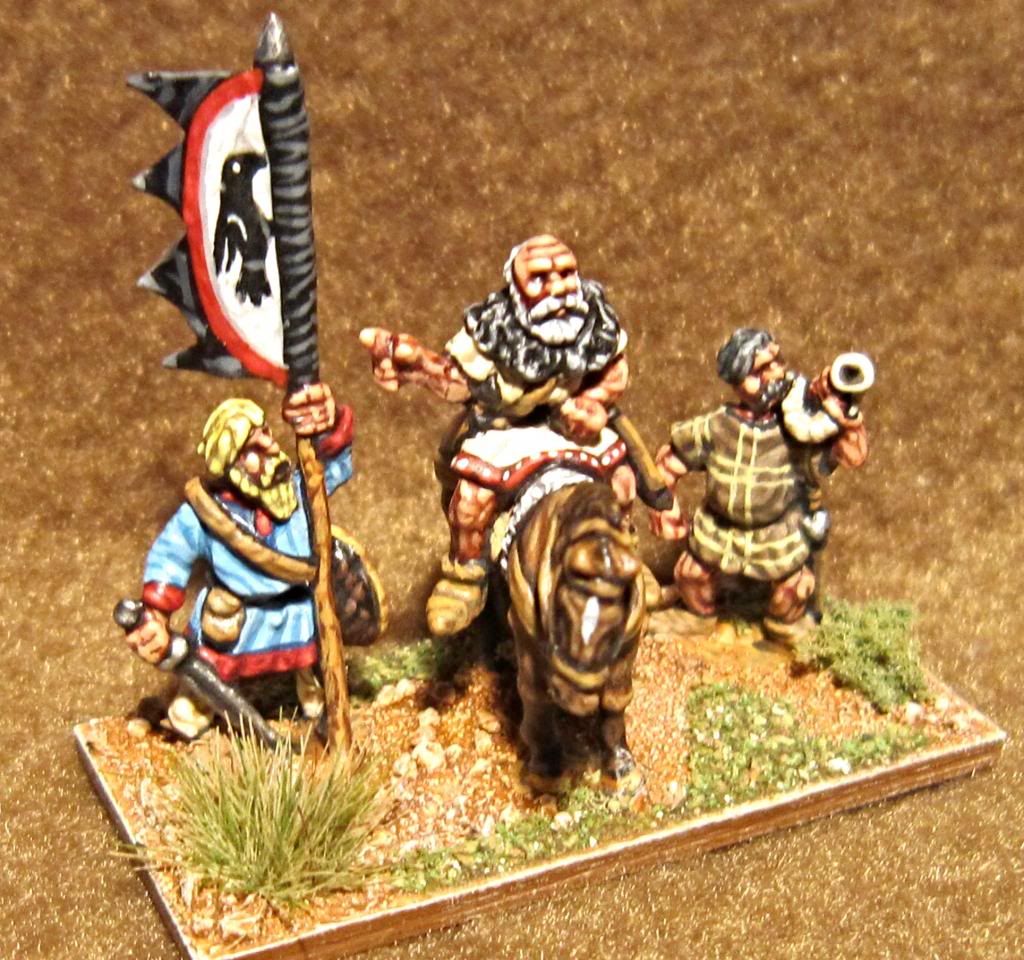|
|
Post by lkmjbc on Jun 7, 2016 16:51:10 GMT
I am wondering how these play...
Clontarf is the best known battle... but do they work well?
Joe Collins
|
|
hdan
Munifex

Posts: 35 
|
Post by hdan on Jun 7, 2016 18:40:04 GMT
Not yet, but I hope they work well, because I have a lot of Irish queued up for painting in the near-ish future....
|
|
|
|
Post by twrnz on Jun 8, 2016 1:13:50 GMT
I have played a few games against Norse Irish using a range of armies including Viking IIRC. They are a surprisingly tough little army and not as challenged as I would have expected. Careful use of terrain is of course important. The Norse-Irish came mid-field in a recent small medieval theme.  |
|
hdan
Munifex

Posts: 35 
|
Post by hdan on Jun 8, 2016 20:56:26 GMT
Mixing a general figure in to a foot element? I feel like the scales have been removed from my eyes! That's fantastic, and now I need to rethink some of my elements.
|
|
|
|
Post by mark leslie on Jun 9, 2016 4:01:41 GMT
Always useful for the commander to be mounted and, I suppose for the Norse-Irish when inevitable disaster strikes, flee fast enough to fight again another day.

|
|
|
|
Post by lkmjbc on Jun 9, 2016 16:38:04 GMT
Very nice pictures...
Joe Collins
|
|
|
|
Post by dvdrvbal on Jun 11, 2016 4:22:53 GMT
Joe, I dug out my book on "Irish Battles A military History of Ireland" by G.A. Hayes-McCoy. It list 16 battles from 1014 to 1798. The first four: Clontarf 1014, Dublin 1171, Dysert O'Dea 1318 and Knockdoe 1504 fall within the time periods of DBA. At Clontarf, there doesn't seem to be much difference between the Irish & the Vikings. Dublin features separate battles between Normans, Irish & Vikings. Irish tactics are hard to duplicate in DBA, because they used road blocks and plashing in heavy forest.
|
|
|
|
Post by lkmjbc on Jun 11, 2016 14:52:45 GMT
Joe, I dug out my book on "Irish Battles A military History of Ireland" by G.A. Hayes-McCoy. It list 16 battles from 1014 to 1798. The first four: Clontarf 1014, Dublin 1171, Dysert O'Dea 1318 and Knockdoe 1504 fall within the time periods of DBA. At Clontarf, there doesn't seem to be much difference between the Irish & the Vikings. Dublin features separate battles between Normans, Irish & Vikings. Irish tactics are hard to duplicate in DBA, because they used road blocks and plashing in heavy forest. Yes, I am most interested in the 4Ax vs 3/4Bd matchup... This of course is the classic Viking vs Irish fight. My question is, "Does 4Ax operate correctly in DBA?" For purposes of Greek/Roman combat, they are close in most situations... though Cannae remains difficult. I like the new Ax against mounted. Against foot, I still am unsettled. Here are some ideas I am toying with... 3Bd only moves 2BW in rough/bad going. Ax and Ps may recoil either their base depth or their base width... thus breaking contact from foot. Joe Collins |
|
|
|
Post by dvdrvbal on Jun 11, 2016 23:26:43 GMT
Joe: Also, read Simon MacDowall's Clontarf scenario for his Comitatus rules.
|
|
Deleted
Deleted Member
Posts: 0
|
Post by Deleted on Jun 13, 2016 14:59:42 GMT
Joe, I dug out my book on "Irish Battles A military History of Ireland" by G.A. Hayes-McCoy. It list 16 battles from 1014 to 1798. The first four: Clontarf 1014, Dublin 1171, Dysert O'Dea 1318 and Knockdoe 1504 fall within the time periods of DBA. At Clontarf, there doesn't seem to be much difference between the Irish & the Vikings. Dublin features separate battles between Normans, Irish & Vikings. Irish tactics are hard to duplicate in DBA, because they used road blocks and plashing in heavy forest. What are the other battles covered in that book? I might be interested in buying a copy depending on how many gunpowder battles are covered. Thanks! |
|
|
|
Post by lkmjbc on Jun 13, 2016 21:49:33 GMT
Joe: Also, read Simon MacDowall's Clontarf scenario for his Comitatus rules. I found it. Excellent writeup... Thanks! Joe Collins |
|